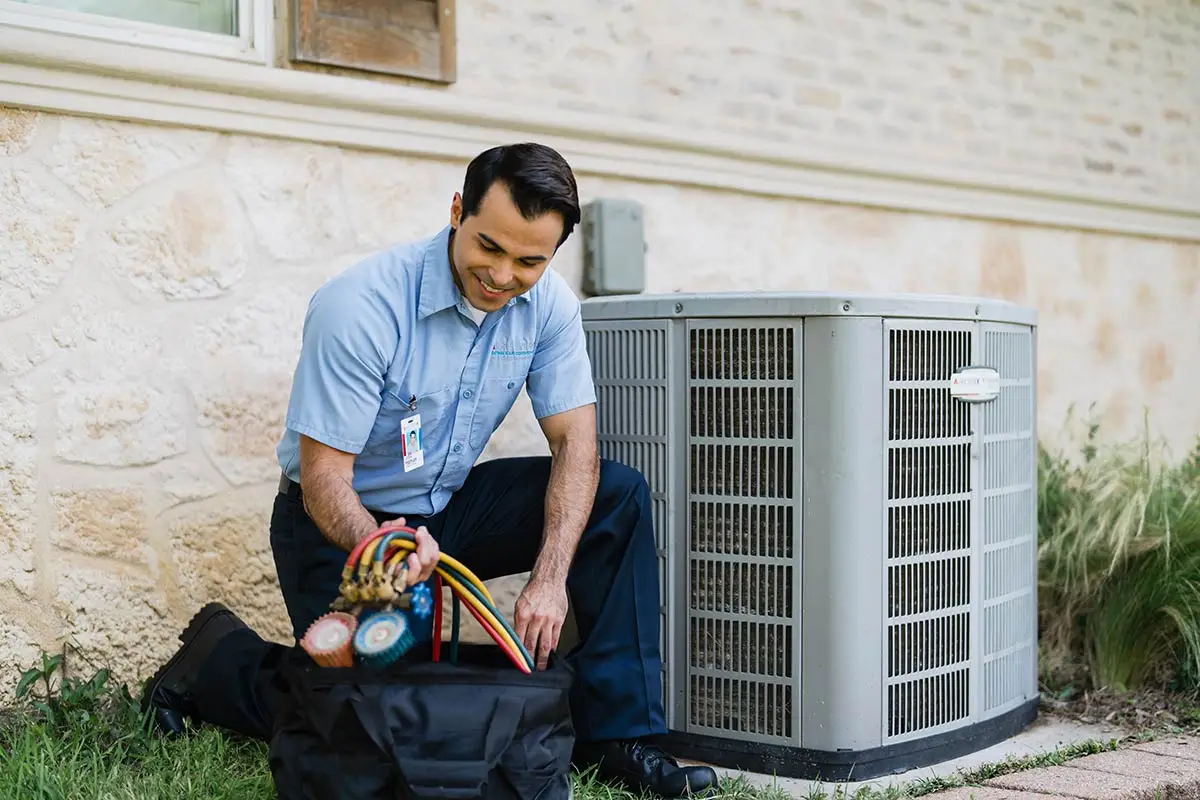
Aire Serv recommends maintaining an ideal house temperature for comfort and energy efficiency.
- Set your thermostat to 78°F (26°C) in summer and 68°F (20°C) in winter.
- Adjust settings when away from home to save energy.
- Use ceiling fans and proper insulation to support temperature control.
- Regular HVAC maintenance ensures optimal performance.
Everyone has their own standards for their house temperature. Some people run hot, others run cold, and some prefer to layer on thick sweaters in lieu of adjusting the thermostat. While there’s not one singular temperature that’s more comfortable than others, most people tend to set their thermostats between 68 and 78 degrees Fahrenheit. That’s a fairly wide range – if you’re curious about how to find the ideal house temperature and stay comfortable all year round, keep reading.
Factors That Impact House Temperature
Home design is an important consideration to weigh when determining the ideal temperature for your space. For instance, if you have particularly high ceilings and a lot of big windows, you might find yourself cranking the air conditioner colder or the heat warmer than someone with low ceilings and smaller windows. In the winter, the kitchen and living room at the heart of the home might feel comfortable, while bedrooms and other living spaces may feel too chilly.
Humidity can also impact the temperature of a house. The air tends to feel naturally drier in the winter months. This can cause moisture to evaporate from the skin faster, leaving you cold. In summer, the opposite is true; high humidity creates a muggy sensation, sending you to adjust the air conditioner accordingly.
Home occupancy also makes a difference. If you’ve ever felt overheated in a crowded room, you’ve seen this dynamic. The more people and pets in a space, the warmer it tends to be. Of course, young people, older folks, and those in poor health tend to feel cold and may manually adjust the thermostat to reflect their needs. All of these factors play a role in determining the ideal temperature of a home.
Comfortable Room Temperature for Sleeping
While no perfect temperature applies to all humans all the time, there has been a lot of research on the subject – especially when it comes to sleeping. Sleep psychologists recommend keeping your bedroom between 60 and 67 degrees while you’re resting. Ideally, you want to mimic the conditions of a cave. Eliminate all sources of light and noise and adjust your thermostat down a few degrees. You’ll be sleeping like a baby in no time!
Thermoregulation is very important for staying in the deepest phases of sleep. When we’re too warm, we get pulled out of these phases to toss, turn, and adjust. Keeping your house temperature cool increases the odds of getting a restful night of sleep. Of course, these recommendations apply to adults, so little ones may need to be kept in rooms as warm as 70 degrees for safety.
Tips for Maintaining Your Ideal House Temperature
While adjusting your home’s thermostat to achieve your desired comfort level is easy, finding the right setting can often be challenging. Answering the question “What is a comfortable room temperature?” is a very personal thing that may change from one home to the next. If you’re having trouble maintaining a comfortable temperature in your space, start investigating possible sources of trouble.
For starters, you may want to look into your home’s humidity levels. A whole-house humidifier can help you set temperatures back a few degrees in winter without sacrificing comfort. During the summer months, exhaust fans can help keep humidity down in the laundry room, bathroom, and kitchen. This will help you avoid the uncomfortable “cold but clammy” sensation.
A zoning HVAC system is another option worth considering. They heat and cool each section of your home individually, allowing you to adjust temperatures accordingly. Interior heat gain, sun exposure, and other factors can cause significant temperature fluctuations. Zoning systems remedy this all too common problem.
You may also want to invest in a programmable thermostat. These smart devices allow you to save energy without sacrificing any degree of comfort. It allows you to program temperature adjustments while you’re asleep or away from home and resume them to a comfortable level by the time you wake up or return home. Another advantage that these smart devices offer is the ability to learn your temperature preferences and adjust your thermostat accordingly. This not only makes maintaining a comfortable temperature easier, but it can also help with energy efficiency too!
If you’re still struggling to find a comfortable room temperature, try dressing in layers in the winter. Swap out your sweater and long pants for shorts and tank tops in the summer. You’d be surprised at how much of a difference the right apparel can make when it comes to your comfort level.
Let Aire Serv® Help You Achieve the Ideal House Temperature
Whether you’re hoping to find the ideal home temperature, save on energy bills, or just maintain your system, Aire Serv can help. Our team of professionals can investigate your heating and cooling concerns and provide options for adjustments, repairs or replacements when necessary. To learn more or to schedule HVAC services near you, please contact your local Aire Serv today!

